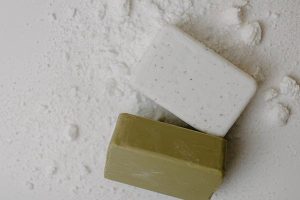Calcium carbonate is an inorganic compound with the chemical formula CaCO₃. It is the main component of limestone, marble, etc. Calcium carbonate is usually white crystal, odorless, basically insoluble in water, and easily reacts with acid to release carbon dioxide [1]. It is one of the common substances on the earth. It is found in rocks such as aragonite, calcite, chalk, limestone, marble, and travertine. It is also the main component of some animal bones or shells. Calcium carbonate is also an important building material and is widely used in industry.

nature #
physical properties #
Calcium carbonate is white fine crystalline powder, tasteless and odorless. There are two forms: amorphous and crystalline. The crystal form can be divided into orthorhombic crystal system and hexagonal crystal system (calcium carbonate anhydrous is colorless orthorhombic crystal, calcium carbonate hexahydrate is colorless monoclinic crystal [4]), columnar or diamond-shaped, with a density of 2.93g/cm 3 . The melting point is 1339°C (decomposed at 825-896.6°C), and the melting point is 1289°C under 10.7MPa. Almost insoluble in water, soluble in water containing ammonium salt or ferric oxide, insoluble in alcohol .
material structure #
Its crystal structure is orthorhombic . Each calcium carbonate molecule consists of one carbon atom and three oxygen atoms, with each oxygen atom linked to a calcium ion. Calcium carbonate is composed of ionic bonds between calcium ions and carbonate ions, and the carbonate ions are internally composed of carbon-oxygen covalent bonds. Among them, carbonate belongs to sp2 hybridization, and the central carbon atom has 3 orbitals and one p orbital. According to the VSEPR model, it is an AY3 type molecule. Its VSEPR ideal model is a planar triangle, and there are 3 CO bonds in the molecule that form a planar triangle; in addition, It also has a 4-orbital 6-electron pp large bond [6]. In a crystal, calcium carbonate molecules are arranged in a layered structure parallel to the a- and c-axes. These layers are interconnected by coplanar oxygen atoms and form a three-dimensional network structure. This structure gives calcium carbonate high stability and hardness.
Classification #
According to the different production methods of calcium carbonate, calcium carbonate can be divided into heavy calcium carbonate, light calcium carbonate, colloidal calcium carbonate and crystalline calcium carbonate. According to the average particle size (d) of calcium carbonate powder, calcium carbonate can be divided into particulate calcium carbonate (d>5μm), micronized calcium carbonate (1-5μm), fine calcium carbonate (0.1-1μm), ultrafine calcium carbonate Calcium (0.02-0.1μm) ultrafine calcium carbonate (d≤0.02μm). Calcium carbonate can be divided into crystalline calcium carbonate and amorphous calcium carbonate based on the regular arrangement of the atoms and ions that make up calcium carbonate. In addition, there are nano calcium carbonate and so on.
heavy calcium carbonate #
Heavy calcium carbonate (commonly known as heavy calcium) is produced by directly crushing natural calcite, limestone, chalk, shells, etc. using mechanical methods (Raymond mill or other high-pressure mill).
Light calcium carbonate #
Light calcium carbonate (commonly known as light calcium), also known as precipitated calcium carbonate, is made by calcining raw materials such as limestone to produce lime (the main component is calcium oxide) and carbon dioxide, and then adding water to digest the lime to produce lime milk (the main component is calcium hydroxide). Then carbon dioxide is introduced to carbonize the lime milk to form calcium carbonate precipitate, which is finally obtained by dehydration, drying and crushing. Or first use sodium carbonate and calcium chloride to perform a metathesis reaction to generate calcium carbonate precipitate, and then make it through dehydration, drying and pulverization.
colloidal calcium carbonate #
Colloidal calcium carbonate, also known as activated calcium carbonate, modified calcium carbonate, surface-treated calcium carbonate, colloidal calcium carbonate or Baiyanhua, referred to as live calcium, is a surface modification of light calcium carbonate or heavy calcium carbonate using a surface modifier. Made by sex. Since calcium carbonate modified by surface modifiers generally has a reinforcing effect, which is the so-called “activity”, it is customary to call modified calcium carbonate active calcium carbonate.
Properties: Colloidal calcium carbonate is an extremely fine white powder, odorless and tasteless. The particles are approximately spherical and the particle size is less than 0.1um. Because a layer of fatty soap is adsorbed on the surface of the particles, it has colloidal activation properties and is an excellent white reinforcing filler. . Dissolved in water, it decomposes when exposed to acid and turns into burnt black when burned, releasing carbon dioxide and generating calcium oxide. The proportion is 1.99~2.01.
crystalline calcium carbonate #
Calcium hydroxide reacts with hydrochloric acid to generate calcium chloride, which is decolorized by activated carbon and impurities are removed. The calcium chloride is carbonated with carbon dioxide in the presence of ammonia water to obtain calcium carbonate, which is then crystallized, separated, washed, dehydrated, dried, and screened. be made of.
Properties: Pure white, hexagonal crystalline powder. Specific volume 1.2 ~ 1.4 ml/g. Soluble in acid, almost insoluble in water. [7]
Usage: Used in toothpaste, medicine, etc., and can also be used as insulation material and preparation of other chemical raw materials.
Nano calcium carbonate #
Nano calcium carbonate (ultrafine calcium carbonate) has a particle size between 1-100nm and is a newly developed powder material in the 1980s. It is an excellent inorganic filler. When used in plastics, it has good affinity with resin and can effectively increase or adjust the rigidity, toughness and bending strength of the material. It can also improve the rheological properties of the plastic processing system, reduce the plasticizing temperature, and improve the product’s dimensional stability, heat resistance and Surface smoothness; in rubber systems such as NR, BR, SBR, it is easy to mix and disperse evenly, and can make the gum soft, and can also improve the extrusion processing performance and mold fluidity. It makes rubber products have a smooth surface and elongation It has the characteristics of large rate, high tensile strength, small permanent deformation, good bending resistance and high tear resistance. [10]Compared with ordinary calcium carbonate, nano-calcium carbonate has a special crystal structure, surface electronic structure, and excellent quantum size effect and surface effect. It is widely used in chemical industry, catalysis, optics, magnetism, electricity and other fields [11]. However, nanometer calcium carbonate is easy to aggregate and its surface is hydrophilic and oleophobic, which limits its application in organisms.
Industrial applications #
Calcium carbonate is the trade name of limestone, a valuable resource with a wide range of uses as a mineral raw material. Limestone has been widely used in the history of human civilization because of its wide distribution in nature and easy access. As an important building material, it has a long history of mining. In modern industry, limestone is the main raw material for manufacturing cement, lime, and calcium carbide. It is an indispensable flux limestone in the metallurgical industry. After ultra-fine grinding, high-quality limestone is widely used It is used in the manufacturing of paper, rubber, paint, coating, medicine, cosmetics, feed, sealing, bonding, polishing and other products. According to incomplete statistics, the ratio of limestone consumed in cement production to the sum of building stones, lime production, metallurgical fluxes, and ultrafine calcium carbonate is 1:3. Limestone is a non-renewable resource. With the continuous advancement of science and technology and the development of nanotechnology, the application fields of limestone will be further expanded.

 April 1, 2024
April 1, 2024 










